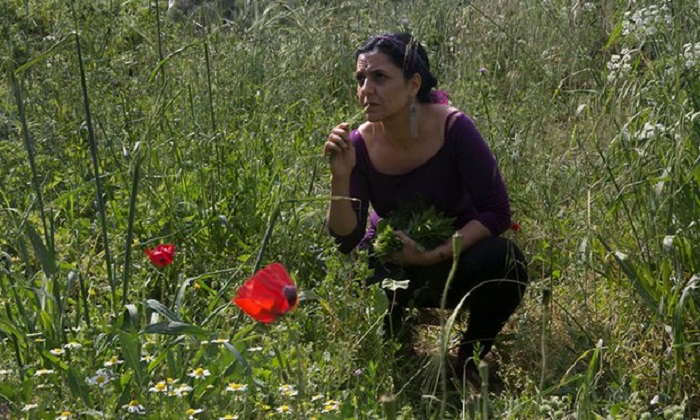Palestinians create seed bank to save their farming heritage in the Holy Land

Now, however, an initiative is being launched to save Palestine’s agricultural plant heritage, with the first seed bank dedicated to preserving traditional varieties used by farmers for generations – before they vanish for ever.
The Palestine Heirloom Seed Library – to be formally launched in June – is part of an effort both to educate Palestinians about traditional forms of agriculture in the Holy Land, which are in danger of being forgotten, and about the culture associated with them.
The seed library will preserve “heirloom” varieties particularly adapted to the West Bank. Supported by the Qattan Foundation, the project is the brainchild of Vivien Sansour, who studied and worked abroad before returning to the West Bank city of Beit Jala.
She was inspired to launch the library after her experiences in Mexico and after working with farmers in the West Bank city of Jenin. “I was away from Palestine for a long time,” said Sansour. “While I was away, what I remembered were the smells and tastes. When I came back, I realised that what I remembered was under threat and disappearing.
“That threat came from several things. From agri-companies pushing certain varieties and farming methods and from climate change. Places, too, where people would forage for edible plants – like the akub thistle – have come under threat because of issues like the spread of Israeli settlements.
“I realised that what was also under threat was something deeper – the connection to a sense of cultural identity. The songs women would sing in the fields. Phrases, even the words we use. So it is about preserving the local biodiversity, but it is also about the importance to Palestinian culture of traditional agricultural methods.”
I realised that what was also under threat was something deeper – the connection to a sense of cultural identity
Vivien Sansour
Typical for many Palestinian villagers were allotment-syle garden plots, known in Arabic as “pieces of paradise”, and the traditional multi-crop planting season known as ba’al.
“They are vegetables and herbs you plant at the end of the spring rains and usually before St George’s Day. The varieties were ones that became adapted over the years to work well in the West Bank’s climate and soil,” said Sansour.
The project, she hopes, will preserve strains including cucumber, marrow and watermelon, once famous throughout the region, that are in danger of dying out. “There is a kind of huge watermelon, known as jadu’i, that was grown in the northern West Bank. Before 1948, it was exported around the region. It was famous in places like Syria. It has almost disappeared. One of the most exciting discoveries so far is that we found some seeds for it. They are seven years old, so we need to see if they are viable.”
Part of the project – which Sansour hopes will eventually be housed in a new science centre, the Qattan Foundation, in Ramallah – has seen teachers being trained in a pilot project to reintroduce students to old agricultural practices. One of these is Inam Owianah, who teaches 12to15-year-olds. “I am a science teacher,” she said. “Part of the curriculum is the growing cycle. I was invited to a workshop of the seed library.
“I wasn’t even sure what an heirloom variety was. And then I understood! It wasn’t just about the seeds, but about an intimate connection to our heritage. And the students started to understand that civilisation is not just about buildings but about a way of life. It was why my grandmother would save the best aubergines and courgettes for seeds for the next year,” said Owianah.
“I started asking my students to ask their grandparents and parents about the stories and sayings associated with the plants.”
On Sansour’s patch on the outskirts of the village of Battir, next to the Jerusalem-Tel Aviv railway line where she will plant her own ba’al varieties in the coming days, fennel, mallow, chard and mint are growing wild. On the stone walls she points out edible herbs.
Other plots around have already been cleared for the growing season with a glyphosate-based weedkiller. “You can see the difference,” she says, disapprovingly picking a handful of wild fennel from her own untreated plot to eat. “You can see how wild and lush it is, even before it is cleared for planting.
“There is an old Palestinian phrase,” she adds: “‘He who does not eat from his own adze cannot think with his own mind.’”














































